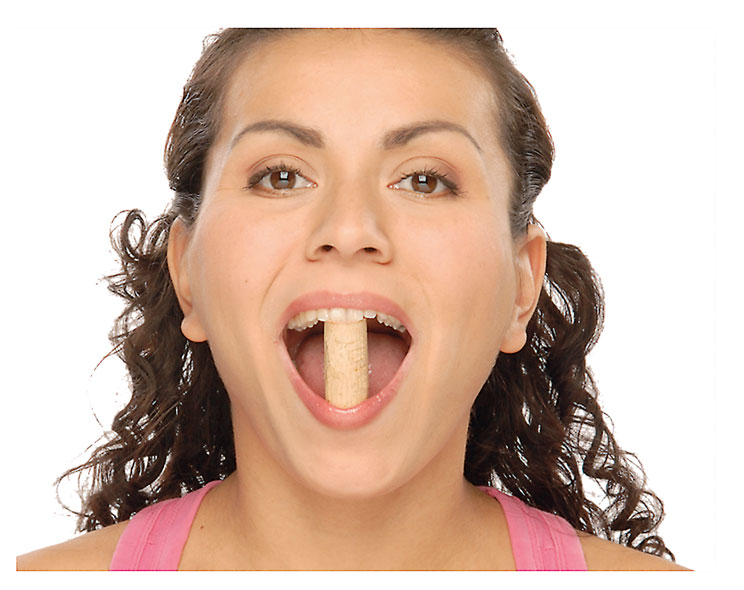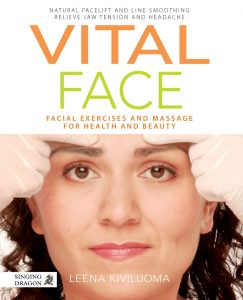Thomas Attlee’s book “Face to Face with the Face” explains how Cranio-Sacral Integration can help a wide range of persistent and painful conditions involving the face and the cranial nerves – from trigeminal neuralgia, sinusitis, hearing loss and TMJ syndrome to autism, chronic fatigue and polyvagal disturbance – through a deeper understanding of quantum levels of health and the biodynamic forces which underlie the body’s inherent healing potential.
face
A quick exercise that will work wonders on your jaw
 Combination exercise to strengthen buccinator and risorius muscles
Combination exercise to strengthen buccinator and risorius muscles
Place a cork or something of a similar suitable size between your teeth to keep your lower jaw down. Hold the position and simultaneously pull the corners of mouth straight sideways.
Repeat 10 times. Close your mouth and rest for a few seconds. Place the cork again and repeat another 10 times.
IMPACT ON APPEARANCE: Tones the lower cheek.
IMPACT ON HEALTH: Relaxes and lengthens jaw-closing chewing muscles.
Vital Face by Leena Kiviluoma has a whole programme of facial exercises and massage for health and beauty (some with corks and some without!) find out more here.
 Vital Face
Vital Face
Facial Exercises and Massage for Health and Beauty
Leena Kiviluoma
This is a fully-illustrated guide to stretching and massage techniques to relax the facial, neck and shoulder muscles. The exercises address health issues such as teeth clenching and grinding, pain in the face, jaw, head or neck, and can improve the effects of Bell’s Palsy. They also help reduce facial lines and leave the skin healthy and glowing.
PRECAUTIONS:
– Perform all the stretches slowly and gently
– Concentrate on the stretch
– Stretch the chewing muscles carefully to a point of mild discomfort and hold the stretch for a while. The discomfort should begin to fade during the stretch, when the stretch gradually relieves tension and loosens your chewing muscles.
– Keep the muscles you are stretching relaxed. Breathing deliberately during the stretching helps you relax and control the stretches. Enjoy the relaxing feeling of stretches.
– If a stretch feels too uncomfortable and tenses your muscles, decrease the force or the range of movement or both.
– The feeling of the stretch should not be painful. It should not produce pain in the muscles or in the joints. Distinguish the feeling of a healthy muscle stretch from the sensation of pain.
– Hold each stretch for the recommended time and repeat each stretch the recommended number of times. You can increase the duration of a stretch as well as the number of repetitions if you like and as long as it feels comfortable.
– Application of moist heat or cold is sometimes a helpful relaxing procedure before the stretching of the chewing muscles.
Caution: Never perform sudden and forceful movements during stretching or try to force your jaw beyond its physiological limits. Those with a history of a jaw dislocation must be careful not to perform jaw movements that are too wide.